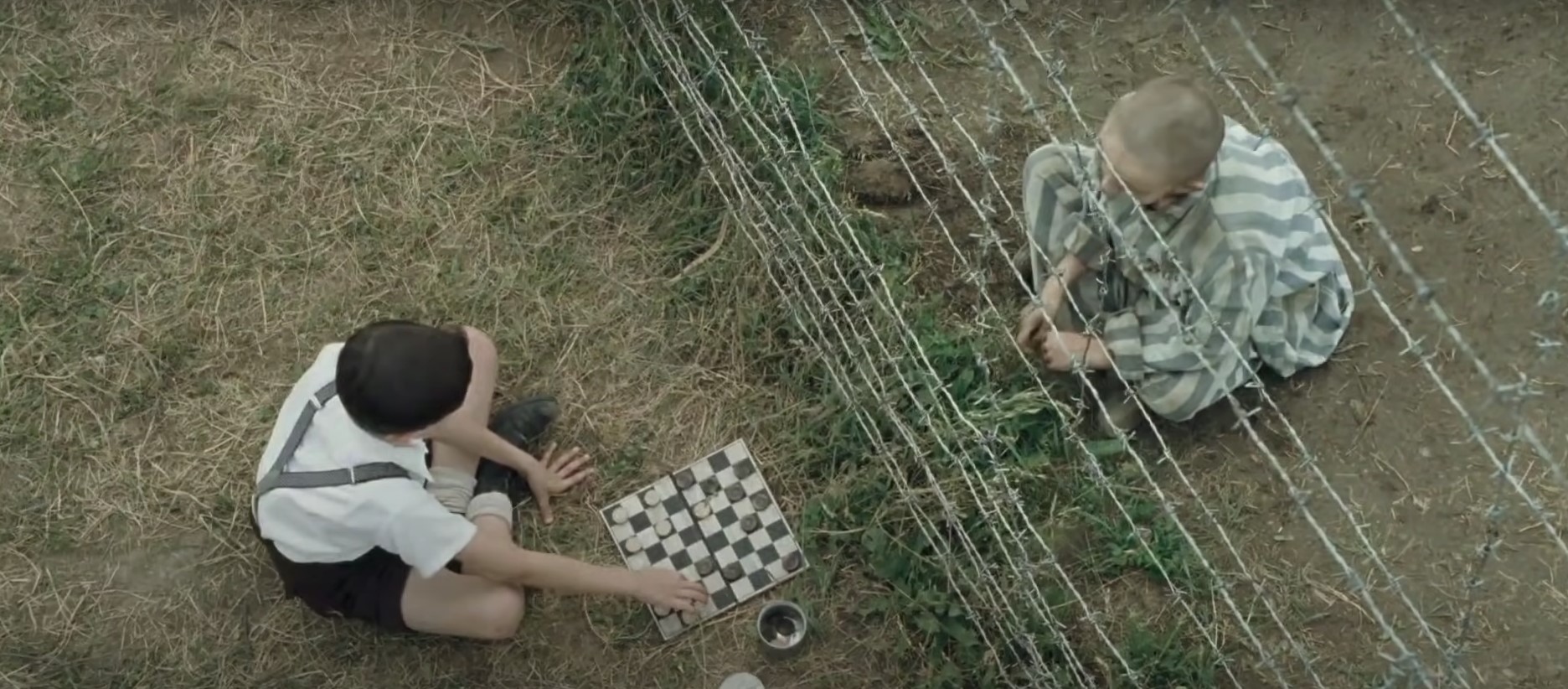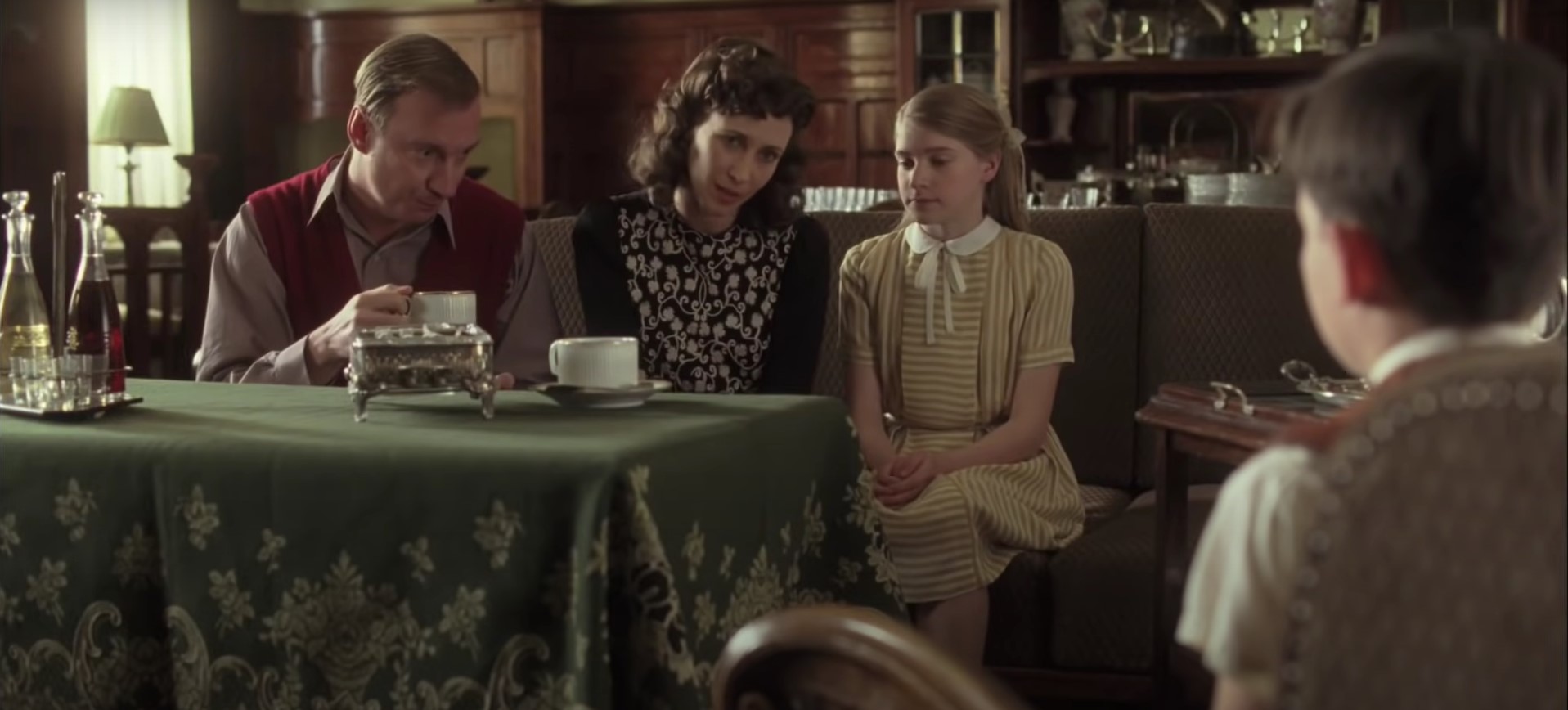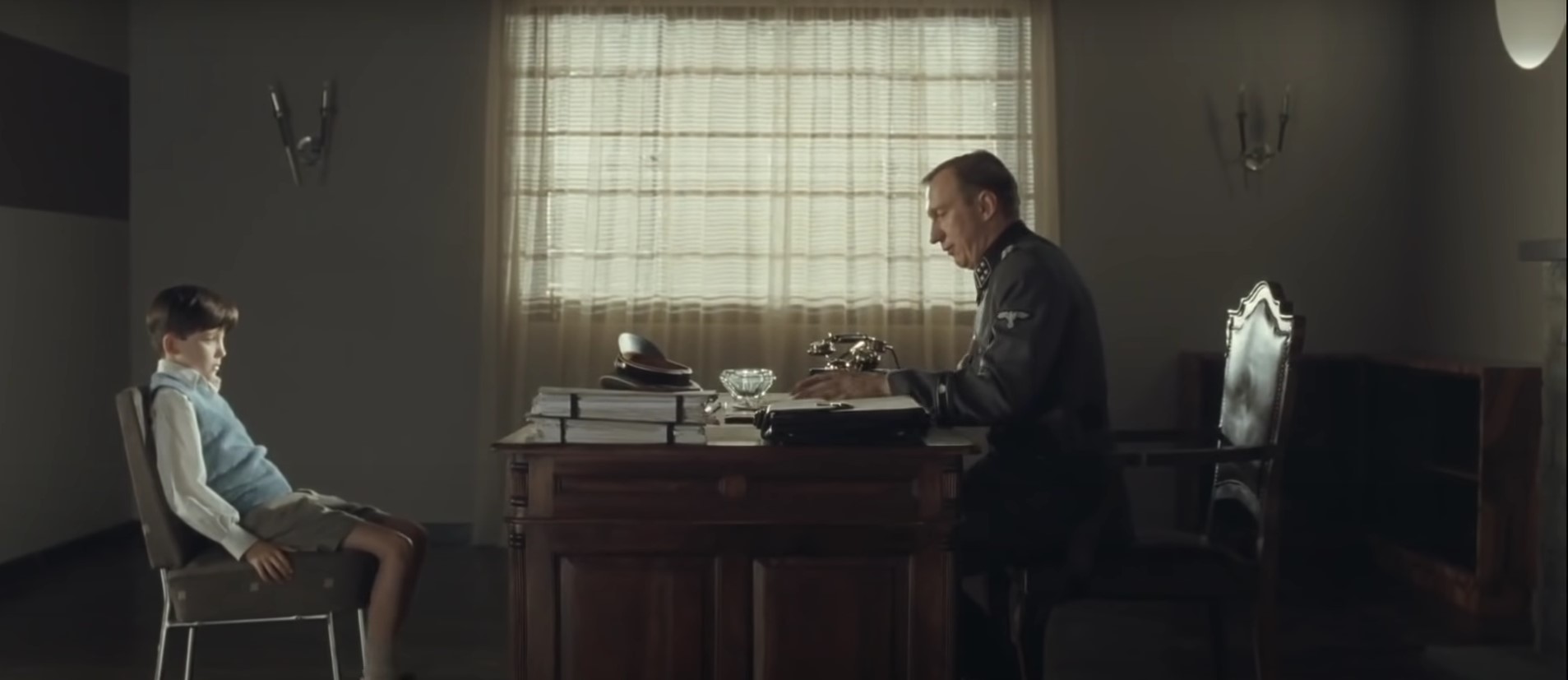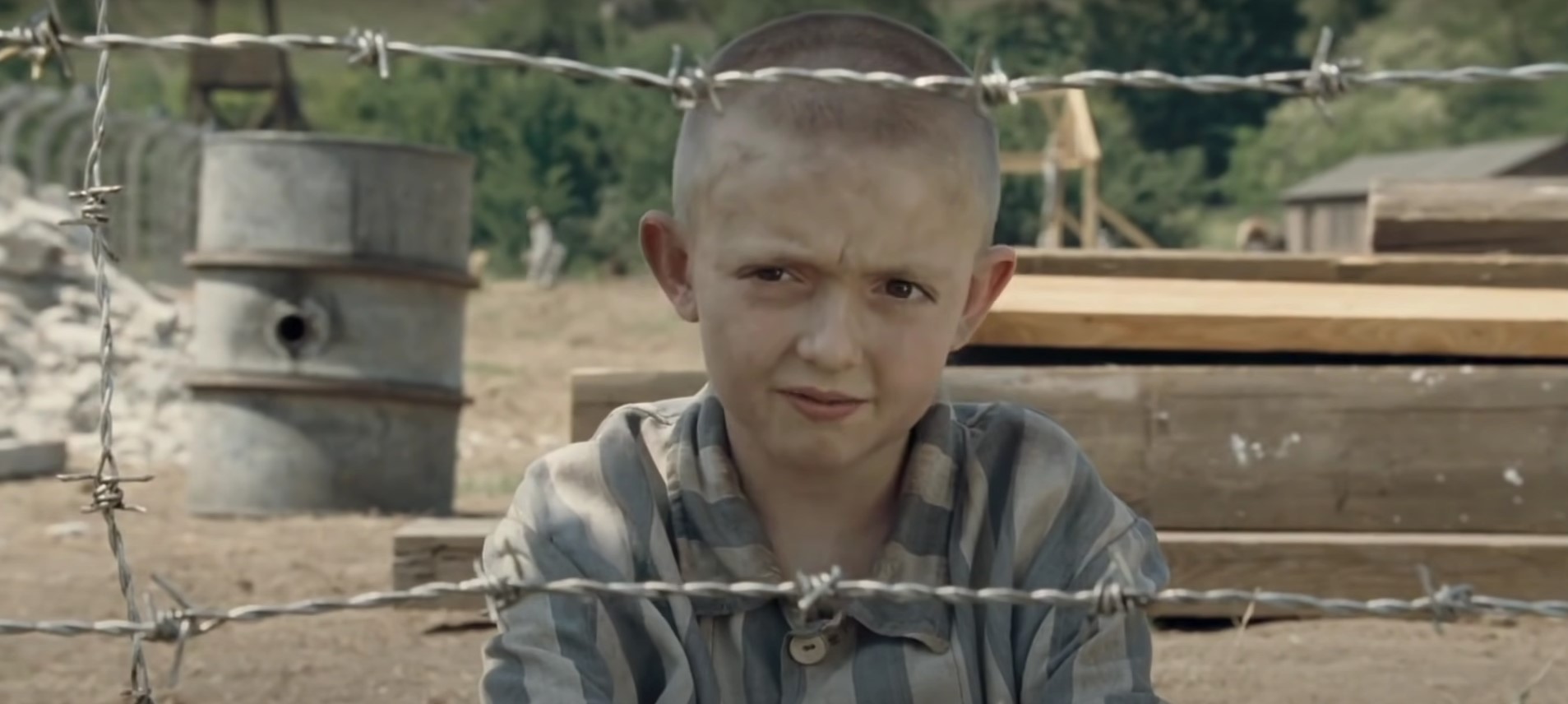Directed by Mark Herman (‘Hope Springs’), ‘The Boy in the Striped Pyjamas’ (2008) is a gripping historical drama movie. Set during World War II, the story revolves around the friendship between Bruno (Asa Butterfield), a German boy, and Shmuel (Jack Scanlon), a Jewish boy. Bruno arrives with his family in Nazi-occupied Poland from Berlin when his father, Ralf (David Thewlis), is appointed to take charge of a concentration camp. One day, while exploring the surroundings, the boy comes across a barbed-wire fence and meets Shmuel, who is on the other side.
Unaware of the truth, Bruno thinks Shmuel and the others he sees beyond the fence are farmers, and the striped uniforms they wear are pajamas. while the latter believes that his grandparents died after falling sick while coming to the camp. ‘The Boy in the Striped Pyjamas’ intricately explores the persistence of innocence despite the overwhelming presence of cruelty, inhumanity, and genocide. Thus, if the film’s depictions of Nazi Germany, concentration camps, and the harrowing condition of the Jewish people have made you wonder whether actual events inspire it, we’ve got you covered.
Is The Boy in the Striped Pyjamas a True Story?
No, ‘The Boy in the Striped Pyjamas’ is not based on a true story. The Holocaust movie is the cinematic adaptation of Irish author John Boyne’s eponymous novel, which Mark Herman turned into a script for the big screen. In an interview with BBC Film Companion in 2009, Boyne spoke about how he came up with the story.” The idea I had was these two boys [Bruno and Shmuel] sitting at a fence, talking to each other,” Boyne explained.

Boyne continued, “And I knew where the fence was, and I was interested in exploring the journey that would bring — Bruno particularly — to that point in the conversations he would have and the necessary end his story would reach…I started off with an idea of a fable, and I started out with a tone of voice of writing it in the way that a nine-year-old would see it. But I didn’t think of it in terms of a children’s book until about chapter three. And then, it sorts of occurred to me that I’m writing a children’s book here.”
Herman was sent a galley copy of the book before its publication, and he realized that what was happening with this novel was different from the usual fare. Most novels that eventually become movies have their rights purchased during the publication process, but ‘The Boy in the Striped Pyjamas’ didn’t. According to Herman, it was because of all the negative press associated with the book. He was intrigued by the novel’s plot, which is told from Bruno’s perspective. He bought the rights for the book and developed a few drafts before Miramax came on board.

Although the story that both the film and novel versions of ‘The Boy in the Striped Pajamas’ tell is fictional, the setting is based on history. In the book, Ralf is the Commandant of Auschwitz, which was, in reality, a collection of more than 40 concentration and elimination camps in Nazi-occupied Poland. Over the years, both the book and the film have received significant criticism for their portrayal of Nazi characters. Much of it stems from the fact that the book and movie focus on the tragedy of the perpetrator, the SS Commandant, and his family, and not the victims of their atrocities.
The critics argue that the aforementioned factor lowers the culpability of a character like Ralf and makes him appear sympathetic. According to a 2009 study performed by the London Jewish Cultural Centre, a survey showed about 75% of the people they spoke to believed that Boyne’s book was based on a true story. Some students even thought the concentration camps were shut down for good after Bruno’s death.

On the other hand, while speaking at an event in Tennessee, Art Spiegelman, the author of the graphic novel ‘Maus,’ stated that the students should read other Holocaust books instead of Boyne’s. “The guy [Boyne] didn’t do any research whatsoever,” Spiegelman said. Addressing the criticism, Boyne told The Guardian in January 2022, “The Boy in the Striped Pyjamas is deliberately sub-titled ‘A Fable,’ a work of fiction with a moral at the center.”
The author added, “From the start, I hoped it would inspire young people to begin their own study of the Holocaust, which in my case began at the age of 15 and continued in the decades that followed.” Boyne later penned ‘All The Broken Places,’ a sequel to ‘The Boy in the Striped Pyjamas,’ from the perspective of Bruno’s older sister Gretel — Amber Beattie in the film. In summation, ‘The Boy in the Striped Pyjamas’ is a movie that draws many elements from real history but is ultimately not based on a true story.
Read More: The Boy in the Striped Pyjamas, Explained

